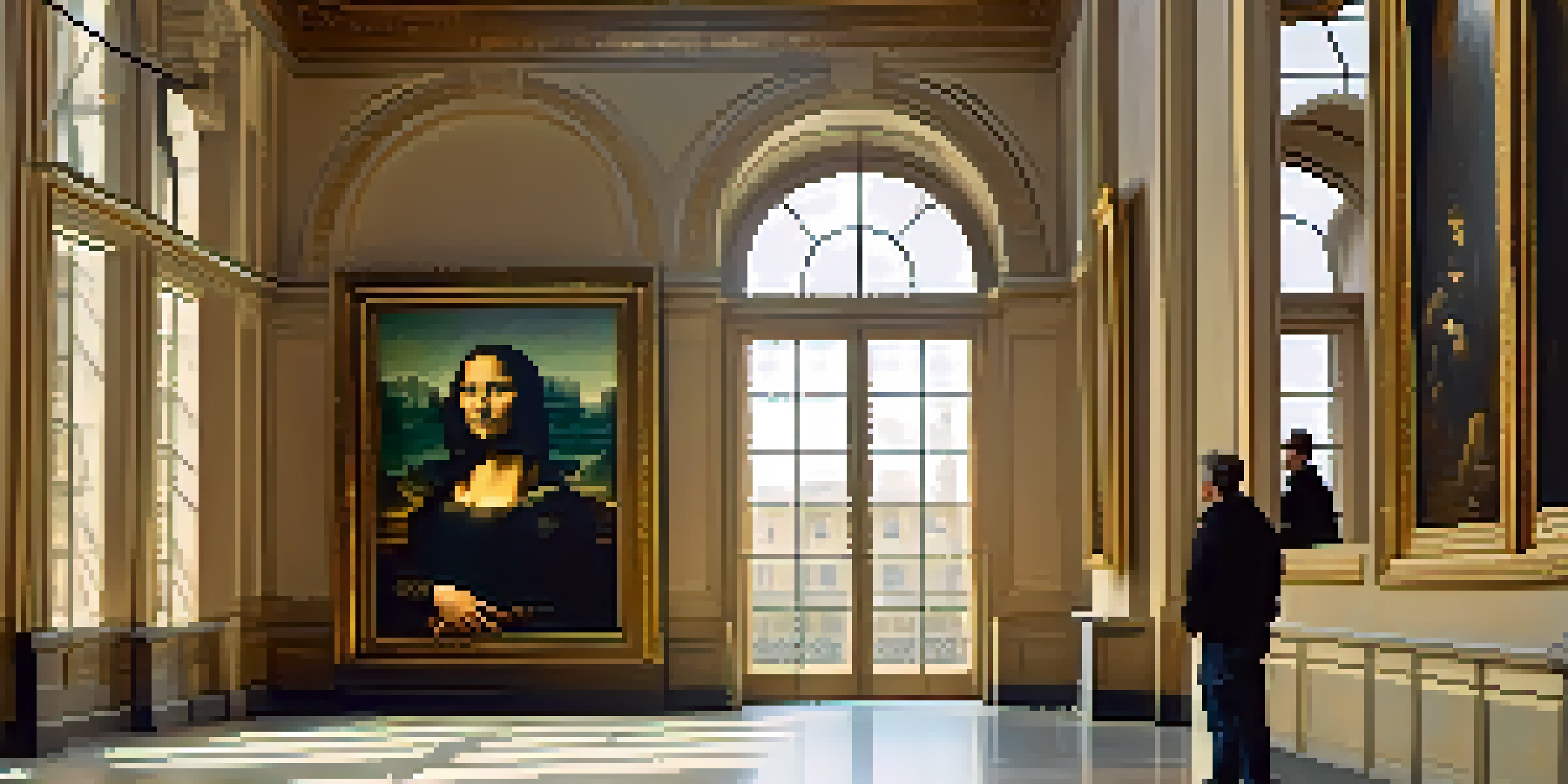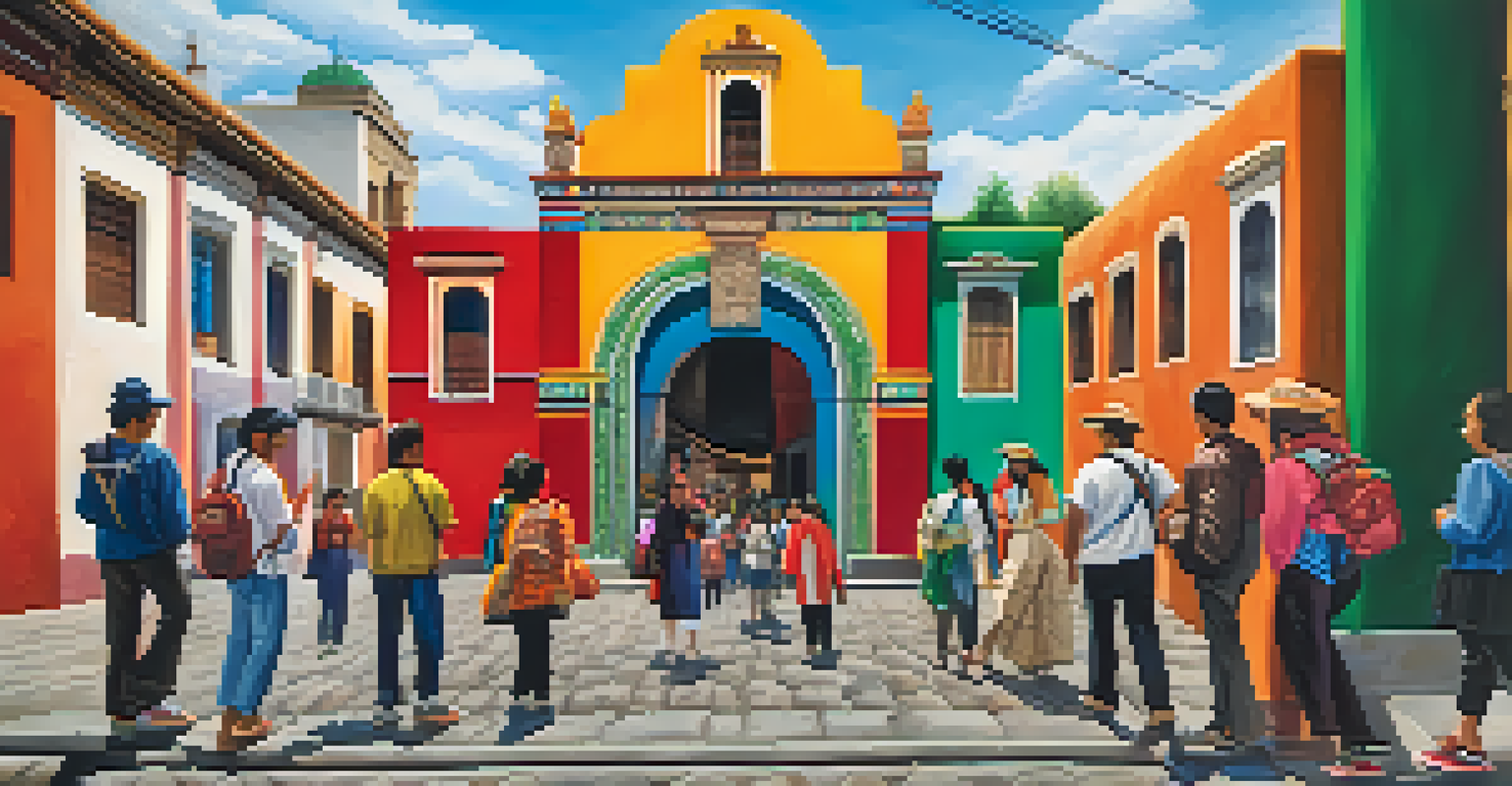Art and History Tours: Traveling for Cultural Education

The Value of Cultural Education Through Travel
Traveling for cultural education opens doors to understanding diverse perspectives. When we immerse ourselves in different art forms and historical contexts, we gain insights that books alone can’t provide. These experiences allow us to appreciate the richness of human expression across time and space.
Traveling – it leaves you speechless, then turns you into a storyteller.
Consider standing before a masterpiece in the Louvre or walking the ancient streets of Rome. These moments are not just about seeing; they’re about feeling connected to the stories behind the art and history. Such experiences can ignite passion for learning that lasts well beyond the trip.
Moreover, cultural education fosters empathy, helping us recognize our shared humanity. By engaging with various cultures, we learn to appreciate differences and embrace what unites us, ultimately enriching our worldview.
Choosing the Right Art and History Tours
Selecting the right tour can make all the difference in your travel experience. Look for tours that emphasize authentic engagement with local art and history, rather than just superficial sightseeing. Research guides who are passionate experts, as their stories can bring the past to life.

For instance, a guided tour through the streets of Florence, led by a knowledgeable art historian, will reveal layers of history and artistry that you might miss on your own. Engaging with local artists or visiting community art projects can also provide unique perspectives that enrich your understanding.
Cultural Travel Enhances Understanding
Traveling for cultural education provides unique insights that deepen our appreciation of diverse perspectives and human expression.
Don’t hesitate to read reviews and ask previous travelers about their experiences. Ensuring the tour aligns with your interests will enhance your journey and make it a memorable adventure.
The Role of Local Guides in Cultural Tours
Local guides play a crucial role in art and history tours, acting as bridges between travelers and the culture they’re exploring. Their intimate knowledge of the area allows them to share stories and insights that you won’t find in guidebooks. This personal connection can elevate your travel experience significantly.
The more I read, the more I acquire, the more certain I am that I know nothing.
Imagine wandering through the colorful streets of Mexico City with a guide who recounts tales of Frida Kahlo’s life. Such narratives provide context that transforms mere sightseeing into an engaging, educational experience. It's as if you're stepping into a living history lesson.
Additionally, local guides often introduce you to hidden gems, like lesser-known galleries or historical sites that are off the beaten path. These unique discoveries can lead to a deeper appreciation for the local culture and its artistic heritage.
Understanding Art in Its Historical Context
To truly appreciate art, it’s essential to understand its historical context. Each piece of art is a reflection of the time, culture, and values of its creators. By learning about the historical backdrop, we gain insights into the motivations and messages behind the artwork.
For example, exploring Impressionist art in Paris while learning about the social changes of the late 19th century can provide a richer understanding of why artists sought to capture fleeting moments. This context allows you to see beyond the canvas and appreciate the artist's intent.
Local Guides Enrich Travel Experiences
Engaging with local guides offers personal stories and hidden gems that transform sightseeing into meaningful cultural journeys.
Thus, art becomes a window into the past, revealing how history shapes creativity. When we grasp these connections, our experiences become more than mere viewings; they transform into profound journeys through time.
Experiencing Art Through Interactive Workshops
Many art and history tours now include interactive workshops, providing travelers with hands-on experiences that deepen their understanding. These workshops allow participants to engage directly with artistic techniques or historical crafts, fostering a personal connection to the culture.
Imagine learning to paint in the style of Van Gogh while surrounded by the very landscapes that inspired him. Such immersive experiences can spark creativity and inspire new forms of self-expression. They also make the cultural education process more memorable and enjoyable.
By participating in workshops, you not only learn about the techniques but also gain insights into the cultural significance behind them. This blend of art and history creates a holistic educational experience that stays with you long after the tour concludes.
The Impact of Cultural Tours on Personal Growth
Participating in art and history tours can significantly influence personal growth. Exposure to different cultures and artistic expressions can challenge preconceived notions and inspire new ways of thinking. This transformation often leads to a more open-minded and enriched worldview.
Travelers frequently return from these tours with a newfound appreciation for diversity. They may find themselves more empathetic towards others, understanding that art and history are universal languages that connect us all. This personal evolution can affect various aspects of life, from relationships to career choices.
Interactive Workshops Foster Connection
Participating in hands-on workshops during tours promotes a deeper understanding of artistic techniques and their cultural significance.
Additionally, these tours can ignite passions and hobbies that travelers may not have explored otherwise. Whether it’s a newfound love for painting, photography, or historical research, the experiences gained can inspire lifelong pursuits and personal fulfillment.
Planning Your Next Art and History Adventure
When planning your next art and history adventure, start by identifying your interests. Are you drawn to modern art, ancient civilizations, or perhaps local crafts? This focus will guide your research and help you select tours that resonate with your passions.
Consider the time of year and destination as well. Different regions host seasonal festivals, exhibitions, or events that can enhance your experience. For example, visiting Italy during a local art festival can provide a rich, immersive experience that showcases the culture in a vibrant way.

Lastly, don’t forget to leave some room for spontaneity in your plans. Sometimes, the most memorable experiences come from unplanned moments, whether it’s discovering a street artist or stumbling upon a local museum. Embrace the journey and allow yourself to be surprised by the richness of cultural exploration.